19.3: Solar Energy
- Page ID
- 34994
Solar energy refers to heat or light energy from the sun. Solar energy is by far the most plentiful type of renewable energy, delivered to the surface of the Earth at a rate of 120,000 Terawatts (TW) per hour, compared to the global human use of 19.8 TW in the entire year of 2019. To put this in perspective, covering 1.2% of the Sahara desert with solar panels could meet Earths energy needs. Of course, this does not consider limitations on storage capacity and the ability to distribute that energy.
Technologies to harness solar energy may be passive or active. Passive solar technologies do not require complex equipment and can be as simple as using natural light from a window or skylight to illuminate a room (figure \(\PageIndex{a}\)). Similarly, solar tubes are lined with reflective material and can concentrate light energy to better illuminate a room (figure \(\PageIndex{a}\)). These are embedded in the ceiling as regular light fixtures would be.
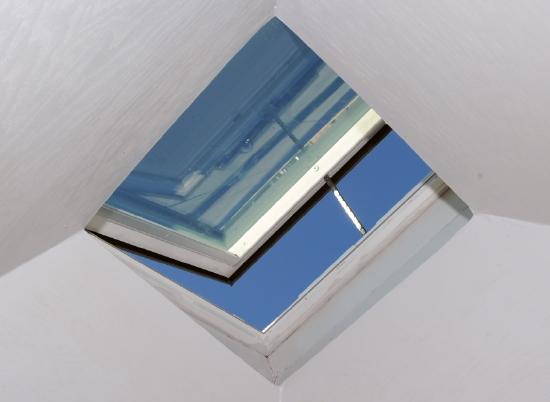
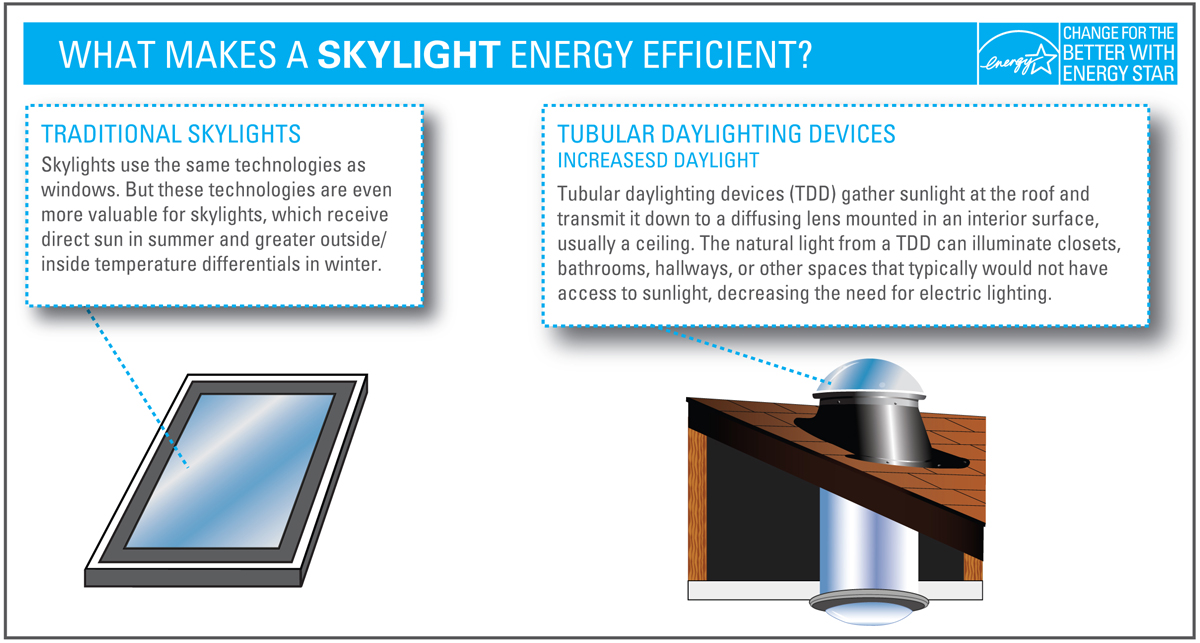
Solar energy can also be used as heat, which can be maximized through careful architecture (figure \(\PageIndex{b}\)). Firstly, the building requires south-facing windows (or glass doors). As sunlight passes through these areas, the energy is stored in the thermal mass of the building. This refers to heat trapping materials such as rock or tiles. The building is also designed such that heat is then distributed throughout the building. Finally, roof eaves or similar structures block sunlight from entering the home during the summer.
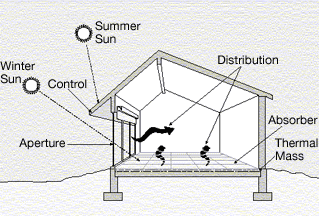
A simple solar water heater is a passive technology consisting of a network of tubes that are heated by the sun (figure \(\PageIndex{c}\)). The hot water is then transferred through the plumping of a home. (Some solar water heaters are more complex, using pumps, and are thus considered active solar technologies.)
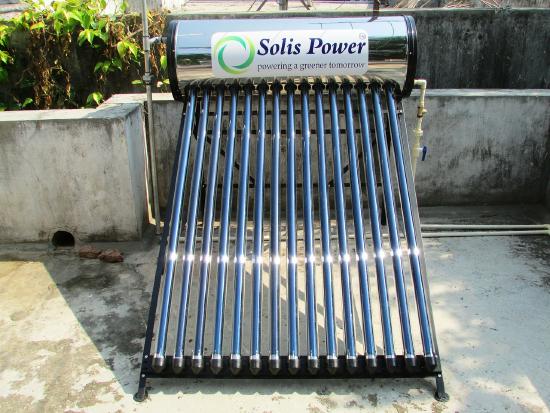
Active solar technologies are more complex. For example, solar panels use light energy to generate electricity (figure\(\PageIndex{d}\)). This occurs in the units of the solar panel, which are called photovoltaic cells (PV cells; figure\(\PageIndex{e}\)). Each photovoltaic cell consists of two layers of semiconductors, substances that only conduct electricity under certain circumstances. (In contrast, conducts always conduct electricity, and insulators do not.) One semiconductor has extra electrons, but the other has extra spaces for electrons. When light shines on the photovoltaic cell, it causes electrons to move from between semiconductor layers through the conductor that connects them (such as metal wires or plates). This movement results in an electric current.
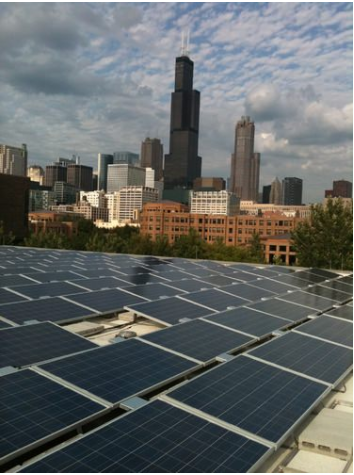
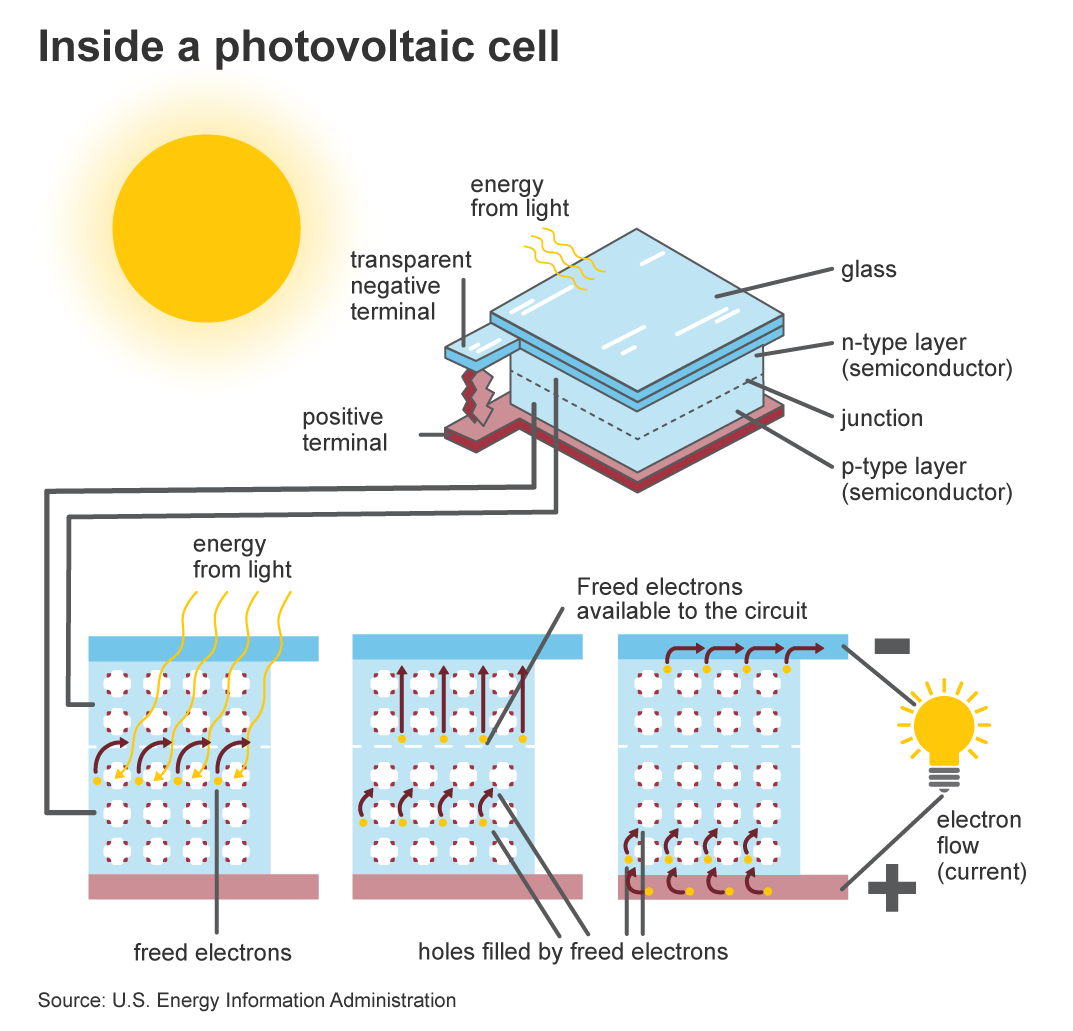
This video explains how the photovoltaic cells within solar panels generate electricity.
Another example of active solar technology is solar thermal technology. This involves using a series of mirror to concentrate solar energy, ultimately generating steam. From there, the steam turns a turbine and powers a generator (figure\(\PageIndex{f}\)).
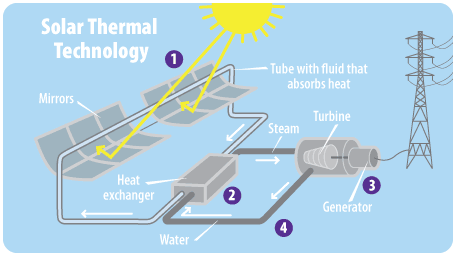
Not only is solar energy abundant, but the use of solar panels for electricity does not generate air pollution or contribute to climate change. (The manufacture of solar panels can generate some pollution, including greenhouse gas emissions, but this is minimal compared to that of fossil fuels.) Like wind energy, expansions on solar energy can create jobs and boost economies. Also like wind, sunlight is intermittent and storage of solar energy is limited by battery capacity. Some locations do not receive consistently direct sunlight and are ill-suited for solar panels. While solar energy has historically been the most expensive form of renewable energy, new technologies have lowered its cost.
The placement of solar panels determines how their environmental impact. Solar arrays are often placed on roofs of buildings or over parking lots or integrated into construction in other ways. However, large systems may be placed on land and particularly in deserts where those fragile ecosystems could be damaged if care is not taken. Additionally, solar farms can compete for agricultural space.
Other downsides of solar energy are water consumption (for some uses) and generation of hazardous wastes. Large networks of mirrors and lenses that concentrate solar energy for electricity generation in thermal solar systems or for heating may need to be cleaned regularly with water. Water is also needed for cooling the turbine-generator. Using water from underground wells may affect the ecosystem in some arid locations. The manufacturing of photovoltaic cells generates some hazardous waste from the chemicals and solvents used in processing. Some solar thermal systems use potentially hazardous fluids (to transfer heat) that require proper handling and disposal. Nuclear power exceeds solar energy in water consumption and hazardous waste generation, however.
Attribution
Modified by Melissa Ha from the following sources:
- Renewable Energy and Challenges and Impacts of Energy Use from Environmental Biology by Matthew R. Fisher (licensed under CC-BY)


